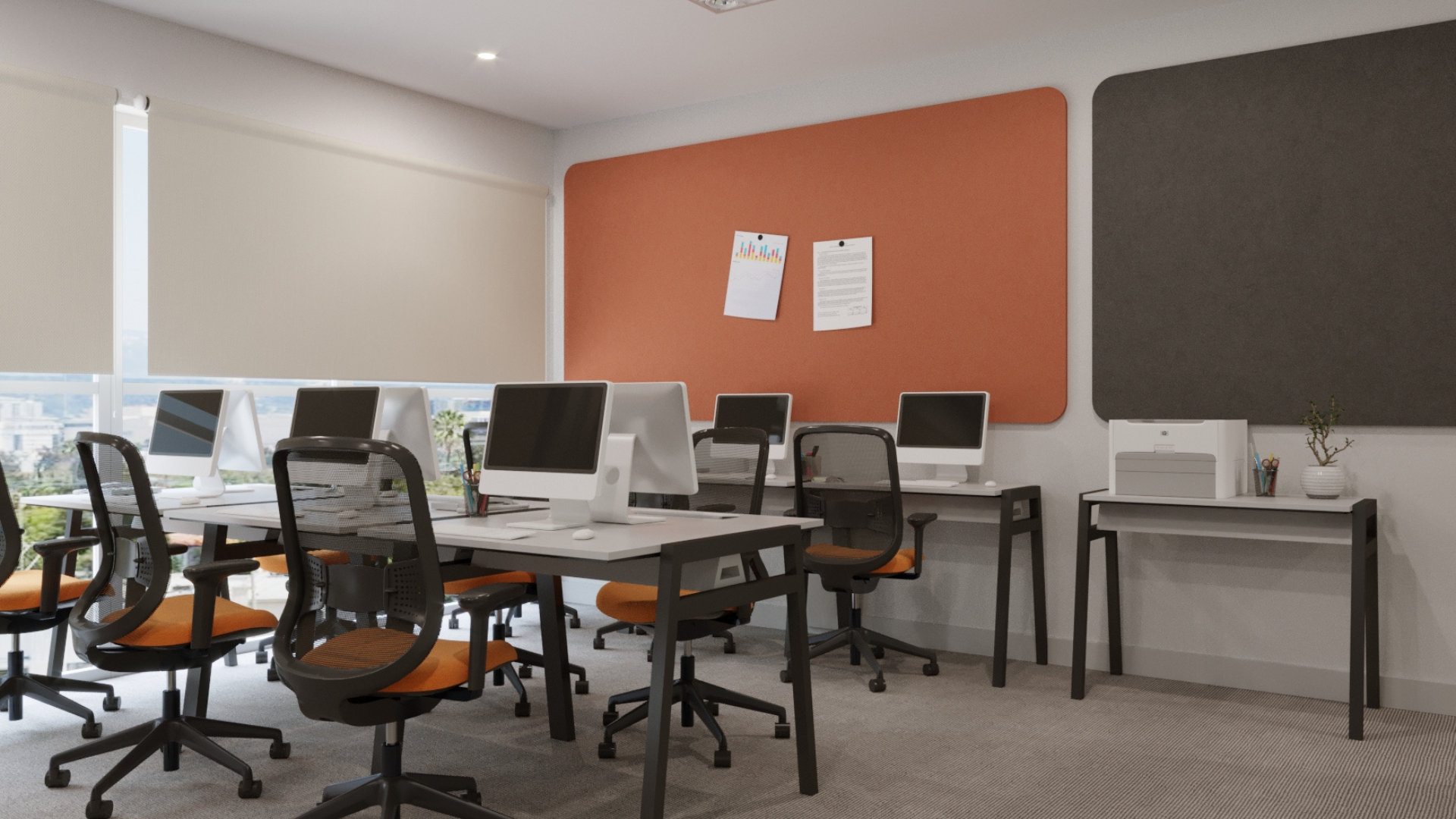
Education
Discomfort and poor acoustics in schools can create inadequate communication between teachers and students as well as increase distraction, hindering a student’s ability to learn. Acoustics in schools are usually poor due to their design – open plan spaces with plenty of hard surfaces, which unfortunately leads to higher levels of reverberation and weak speech intelligibility.
-
MufflePinboard (Sold in Packs) Felt Acoustic Pinboard
Vendor:MuffleRegular priceUnit price / per$221.58 USDSale price From $142.44 USDSale -
MuffleCloud (Sold in Packs) Acoustic Ceiling Cloud - Circle
Vendor:MuffleRegular priceUnit price / per$187.68 USDSale price From $105.60 USDSale -
MuffleBaffle (Sold in Packs) Fabric Acoustic Ceiling Baffle - Straight
Vendor:MuffleRegular priceUnit price / per$236.71 USDSale price From $152.17 USDSale -
MufflePanel (Pack of 20) Geometric Felt Acoustic Wall Panel - Hexagon
Vendor:MuffleRegular priceUnit price / per$869.40 USDSale price $558.80 USDSale -
MuffleRib (Sold in Packs) Felt 3D Wall Panel
Vendor:MuffleRegular priceUnit price / per$268.18 USDSale price From $172.40 USDSale -
MuffleWall (Sold in Packs) Fabric Acoustic Wall Panel - Square
Vendor:MuffleRegular priceUnit price / per$233.92 USDSale price From $131.68 USDSale -
MuffleGrid Felt Acoustic Ceiling Cloud
Vendor:MuffleRegular priceUnit price / per$439.00 USDSale price From $246.94 USDSale -
BuzziSpace BuzziTab Soft Acoustic Wall Panel - Square
Vendor:BuzziSpaceRegular price From $433.85 USDRegular priceUnit price / per
Collection: Education
Acoustics in schools doesn’t just stop at classrooms; hallways and halls can be a major problem that will require adequate noise control to prevent disruption to the surrounding classrooms.
Creating a comfortable schooling environment is essential to ensuring students have a positive learning experience. Better acoustics in schools and lecture halls will help to create a more enjoyable learning environment for students to thrive in.
With the right acoustics, you can improve speech intelligibility, reduce noise build-up and distractions, and prevent excessive reverberation. Our collection of acoustics solutions ideal for the educational sector features a variety of products in different shapes, designs, sizes, and colors, to ensure you find the right solutions that will not only meet your acoustic demands but also the design of your interior.


















